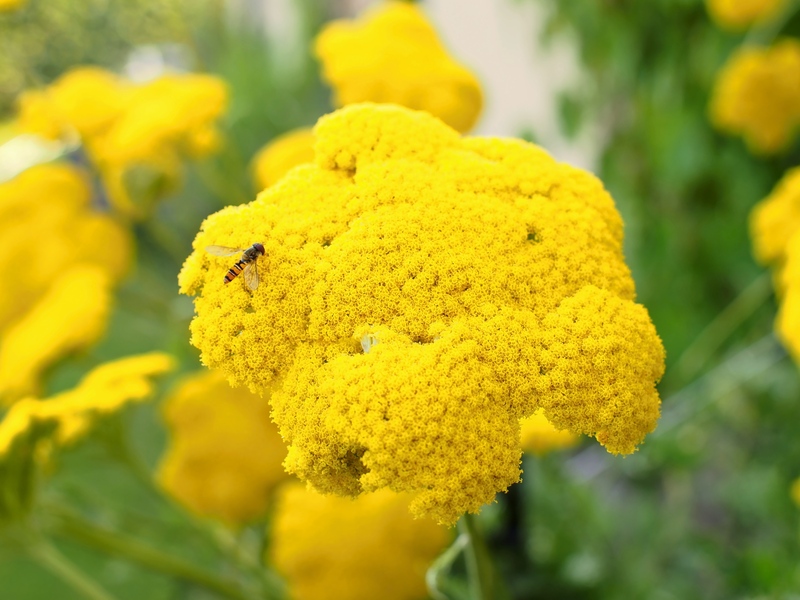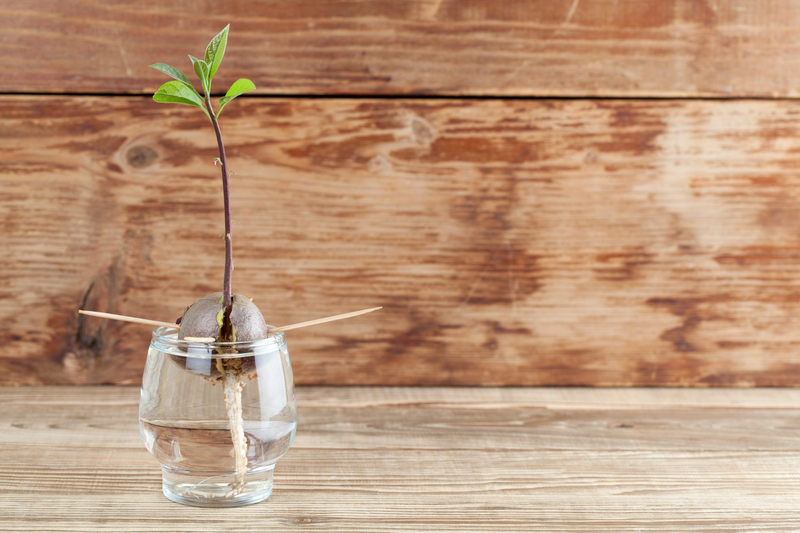Exploring the Art of Container Gardening
Posted on 04/09/2025
Exploring the Art of Container Gardening
Container gardening has steadily risen in popularity among gardening enthusiasts, urban dwellers, and those wishing to infuse their spaces with greenery. Whether you have a sprawling backyard or a modest balcony, the art of container gardening makes it possible to create a thriving garden almost anywhere. In this comprehensive guide, we'll unravel innovative techniques, essential tips, and practical advice for mastering the world of container-based horticulture.

What is Container Gardening?
Container gardening involves growing plants exclusively in containers or pots rather than traditional garden beds. This versatile method allows gardeners to nurture a wide range of plants -- from vegetables and herbs to ornamental flowers and succulents -- in portable vessels suited for indoors, patios, rooftops, or limited outdoor spaces.
- Adaptable: Perfect for restricted spaces such as apartments or balconies.
- Customizable: Enables creative design and seasonal changes.
- Control: Offers the ability to manage soil, moisture, and sunlight conditions easily.
- Accessibility: Ideal for people with limited mobility, allowing for elevated or wall-mounted pots.
Why Choose Container Gardening?
The art of container gardening goes beyond mere convenience. From enhancing your landscape design to promoting sustainable living, here's why you should consider embarking on this rewarding journey:
Flexibility for Every Space
Whether you live in a high-rise apartment or have a small patio, container plants can be arranged or rearranged to suit your space, sunlight availability, and personal style. This dynamic nature makes container gardening artistry accessible to everyone.
Personalized Plant Selection
Container gardens allow you to cater to the unique needs of each plant. Grow leafy greens, flowering perennials, or even dwarf fruit trees by selecting the right type and size of container for each species.
Year-Round Interest
One of the most significant perks is the possibility to maintain visual interest throughout the seasons. Switch out annuals as the climate changes, or design mixed planters for continuous color and texture.
Getting Started: Essential Elements of Container Gardening
To truly appreciate the art of container gardening, it's vital to understand key components that contribute to a flourishing container garden:
1. Choosing the Right Container
- Material: Pots come in clay, ceramic, plastic, metal, wood, and even recycled materials. Each type affects water retention, insulation, and aesthetics.
- Drainage: Always select containers with drainage holes to prevent root rot.
- Size: Ensure the vessel is large enough for root growth and plant stability.
2. Selecting Quality Soil
Unlike traditional gardens, container plants rely exclusively on the quality of their potting mix. Use a well-draining, nutrient-rich commercial potting mix tailored for the kind of plants you wish to grow. Do not use garden soil, which may compact and inhibit root development.
3. Picking the Perfect Plants
Plan plant combinations that share similar sunlight, water, and fertility needs. Consider the following:
- Sunlight availability on your balcony, patio, or windowsill
- Seasonal temperature ranges
- Growth habits and mature size
- Visual appeal: color, texture, and fragrance
4. Understanding Watering Requirements
Plants grown in pots dry out more quickly than those in the ground. Regular, consistent watering is crucial, and you may benefit from self-watering containers, drip irrigation systems, or mulching to retain moisture.
5. Fertilization and Maintenance
Container-grown plants exhaust nutrients rapidly. Feed them using a balanced, slow-release fertilizer or organic compost according to your plants' needs. Prune, deadhead, and inspect regularly for pests or disease.
Creative Ideas for Container Gardening Landscapes
Vertical Container Gardens
For those facing serious space constraints, vertical container gardening is both practical and stylish. Attach rows of pots to walls, suspend baskets, or use vertical planters to cover a blank fence with lush greenery.
Theme-Based Containers
- Herb Gardens: Cultivate basil, mint, parsley, and rosemary in a culinary container near your kitchen for fresh flavors at your fingertips.
- Pollinator Havens: Attract bees and butterflies with colorful planters filled with lavender, marigolds, or salvia.
- Edible Gardens: Grow cherry tomatoes, strawberries, or lettuce mixes in pots for harvesting your own salads.
- Succulent Displays: Arrange low-maintenance cacti and succulents in artistic configurations for a drought-friendly feature.
Stunning Mixed Container Plantings
Combine plants using the thriller, filler, spiller method:
- Thriller: A tall, eye-catching centerpiece plant (ornamental grass, canna lily).
- Filler: Bushy or rounded plants (petunias, coleus) to fill the middle ground.
- Spiller: Trailing plants (sweet potato vine, ivy) that cascade over the container's edge.
Best Practices for Healthy Container Gardens
- Monitor Drainage: Elevate pots or place them on pot feet to allow excess water to escape.
- Choose Appropriate Locations: Move containers as needed to find optimal light or protect from harsh weather.
- Cull and Replace Plants: Remove underperforming plants promptly to maintain vibrant displays.
- Group Pots: Clustering pots together increases humidity and creates a lush effect.
- Use Mulch: A layer of mulch atop the potting soil minimizes water evaporation and suppresses weeds.
Exploring Advanced Container Garden Techniques
Self-Watering Containers
For those with busy schedules, self-watering pots provide plants with a regulated moisture supply, reducing the risk of over- or under-watering. These systems use a reservoir that delivers water as needed.
Hydroponic Container Gardening
Hydroponic gardens grow plants in containers without soil, using nutrient-enriched water instead. This approach is gaining traction for urban container garden enthusiasts seeking efficient, clean food production.
Upcycling Unusual Containers
Inject personality into your space by repurposing old barrels, tin cans, baskets, or even boots as unique planting vessels. Ensure adequate drainage and compatibility with your chosen plants' sizes and root systems.
Companion Planting in Pots
Mixing compatible plants in a single pot can maximize yields and deter pests. For example, combine tomatoes and basil, or marigolds with leafy greens. Be mindful of each species' water and nutrient requirements.
Common Challenges and Solutions in Container Gardening
1. Overwatering and Root Rot
- Ensure drainage holes are unobstructed.
- Use a lightweight, quick-draining potting mix.
- Let soil dry slightly between watering sessions; use a moisture meter if unsure.
2. Insufficient Sunlight
- Monitor light levels daily and relocate pots if necessary.
- Opt for shade-tolerant plants, such as ferns, hostas, or begonias, for low-light areas.
3. Nutrient Deficiency
- Top-dress with compost or administer a water-soluble fertilizer monthly.
- Regularly "refresh" the soil in long-term pots each season.
4. Pests and Diseases
- Inspect plants frequently and remove affected foliage immediately.
- Encourage beneficial insects or use organic sprays if trouble escalates.
Eco-Friendly Approaches to Container Gardening
The sustainable aspect of container gardening can't be overstated. Embrace eco-conscious practices by:
- Choosing terracotta, clay, or biodegradable pots over plastic.
- Using peat-free potting mixes.
- Reusing containers and upcycling household goods as planters.
- Harvesting rainwater for irrigation.
- Implementing organic pest control methods.
Container Garden Care Throughout the Seasons
Spring
- Rejuvenate last year's soil by mixing in compost or fresh potting mix.
- Start seeds of cool-season crops and hardy annuals.
Summer
- Water daily during heatwaves and mulch heavily to conserve moisture.
- Deadhead flowers frequently for continued blooming.
Fall
- Transition from summer displays to autumnal arrangements (think violas, ornamental cabbage).
- Move tender perennials indoors before frost hits.
Winter
- Group pots together for insulation or move containers to a sheltered area.
- Plant evergreens or cold-tolerant shrubs for structure and interest.

Container Gardening FAQ
- Can I grow vegetables in containers?
Absolutely! Many vegetables thrive in pots, including tomatoes, peppers, lettuce, carrots, and radishes. Ensure pots are deep enough for root crops. - How often should I water my container garden?
As a rule, check soil moisture daily -- especially in hot weather. Water when the top inch feels dry. - Do I need special soil for each plant?
Some plants, such as succulents and cacti, benefit from sandier mixes. Most flowers and vegetables prefer standard good-quality potting soil. - Can I reuse potting soil from year to year?
It's safe if you replenish nutrients and ensure no disease is present. Mixing in fresh compost helps rejuvenate old soil.
Conclusion: Embrace the Artistry of Container Gardening
Container gardening is much more than just growing plants in pots; it's about cultivating creativity, adaptability, and a sustainable lifestyle. No matter your space or skill level, you can transform your home or balcony into a living canvas of color and flavor. Start with the basics, experiment boldly, and let your passion for horticulture grow. Exploring the art of container gardening truly has something to offer everyone -- from novice gardeners to seasoned green thumbs.
Ready to embrace the delightful, rewarding world of container gardening? Gather your pots, pick your plants, and let your imagination blossom!



